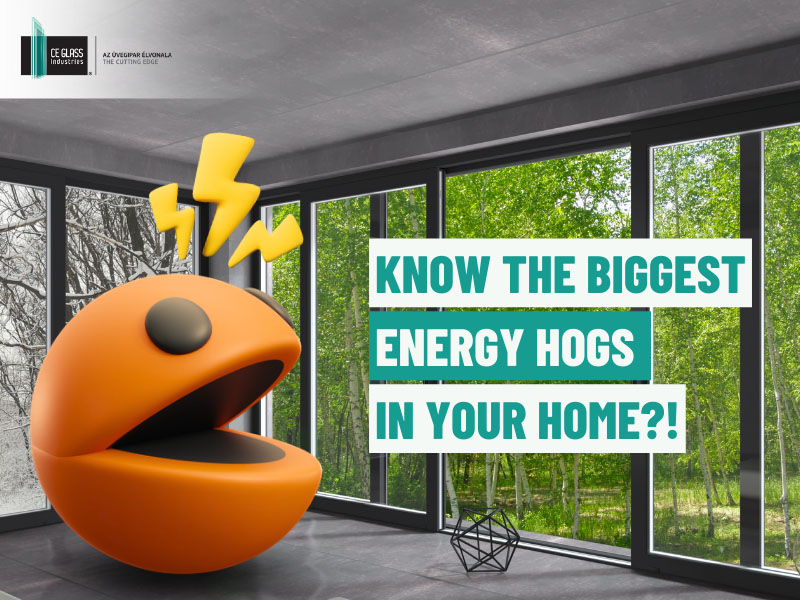You are here
Know the biggest energy hogs in your home?

Good insulation is vital for every home, especially as the demand for sustainability and energy efficiency is growing. With this in mind, it is important to understand the impact of your home, particularly your windows and doors, on heat loss and energy use.
The right windows and doors play a key role in effective thermal insulation. Thermal glazing technology offers a solution that increases the thermal insulation capacity of windows, thus reducing energy consumption. This involves the use of plastic and stainless steel spacers between the panes of glass, thus minimising heat conduction and heat loss.
In addition, windows with warm-flame spacers help to prevent internal condensation, which contributes to a healthier and more comfortable living environment - and in the long run, we can reduce our heating bills! That's why it's worth seriously considering the use of glazing with warm-frame spacers if you want to create a home that is energy efficient, environmentally conscious and healthy.
Let's look at the benefits of warm-flame spacers through a practical example. The Uw (U-value of window) tells us the heat transmission value of the complete window. The lower this value, the better the thermal insulation of your window or door - in new builds, you should not install a window or door above 1.6 W/m2k!
How do we calculate the Uw value? We show the formula:
Let's take a standard window size of 1230 x 1480 mm as a starting point. The apparent width of the frame should be 64 mm.
Ag = 1.485 square metres (the surface area that the enclosure allows to be seen - for example, if the enclosure were 10 cm wide and the external dimensions of the enclosure were 100/100 cm, then 0.8m x 0.8m = 0.64 m2)
Af = 0,335 square metres (the surface area of the enclosure in its installed state, as seen by looking at the surface of the opening - e.g. if the enclosure were 10 cm wide in apparent area and 100/100 cm in external area, then 3,6 m x 0,10m = 0,36 m2)
Ug = 0.6 W/m2K (glazing heat transfer coefficient for 3-layer glazing)
Uf = 1,1 W/m2K (heat transfer coefficient of the enclosure for a plastic opening)
Psi = 0,075 W/mK (linear heat transfer coefficient of the thermal insulating glass edge joint for a warm-flame spacer)
l = 4,9 m (length of the internal framing outlines of the visible surface of the enclosure - e.g. if the visible surface of the enclosure were 10 cm wide and the external dimensions of the enclosure 100/100 cm, then 0,8 m x 4 = 3,20 m; value of the thermal bridge along the line)
The final result is:
Uw = 0,89 W/m2k
The same calculation was done for a glass structure with a warm-flame spacer:
Ag= 1,485 m2
Af= 0,335 m2
Ug= 0.6 W/m2K (3-layer glazing)
Uf= 1,1 W/m2K (aluminium profile)
Psi= 0,035 W/mK (CHR-U thermal flange spacer batten)
l= 4,9 m (thermal bridge along the line)
The final result is:
Uw=0,79 W/m2K
The calculation shows that if you use warm-flap spacers instead of aluminium spacers for a quality plastic window and door, you can achieve a Uw-value improvement of 0.1! In our next article, we will also calculate the Uw-value of an aluminium window!
GET A CUSTOMER OFFER FOR OUR VALUE AND QUALITY AWARD WINNING SZILTHERM INSULATING GLASS!


